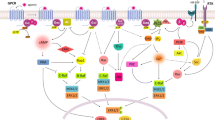Abstract:
The melanocortins are a family of bioactive peptides derived from proopiomelanocortin, and share significant structural similarity. Those peptides are best known for their stimulatory effects on pigmentation and steroidogenesis. Melanocortins are synthesized in various sites in the central nervous system and in peripheral tissues, and participate in regulating multiple physiological functions. Research during the past decade has provided evidence that melanocortins elicit their diverse biological effects by binding to a distinct family of G protein-coupled receptors with seven transmembrane domains. To date, five melanocortin receptor genes have been cloned and characterized. Those receptors differ in their tissue distribution and in their ability to recognize the various melanocortins and the physiological antagonists, agouti signaling protein and agouti-related protein. These advances have opened new horizons for exploring the significance of melanocortins, their antagonists, and their receptors in a variety of important physiological functions.
Similar content being viewed by others
Author information
Authors and Affiliations
Additional information
Received 5 October 2000; accepted 10 November 2000
Rights and permissions
About this article
Cite this article
Abdel-Malek, Z. Melanocortin receptors: their functions and regulation by physiological agonists and antagonists. CMLS, Cell. Mol. Life Sci. 58, 434–441 (2001). https://doi.org/10.1007/PL00000868
Issue Date:
DOI: https://doi.org/10.1007/PL00000868




